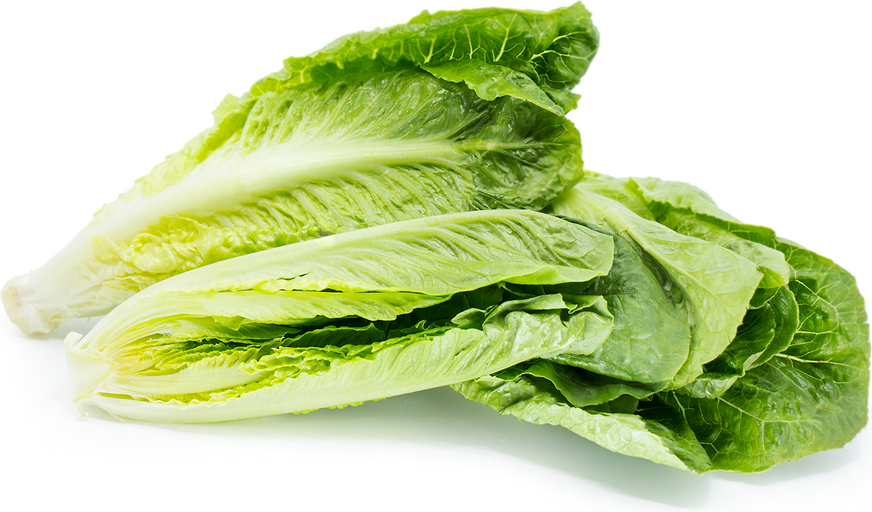


Romaine Hearts
Estimated Inventory, 48 ct : 0
Description/Taste
Romaine lettuce is perhaps the second most recognizable and ubiquitous of all lettuces types, second only to Iceberg. The Romaine hearts are essentially the inner blanched leaves of the romaine plant. They constitute colors of cream, yellow and lime green along the ribs of the leaves. Romaine hearts are chosen for their crunchy, thick-walled succulent leaves.
Seasons/Availability
Romaine hearts are available year-round.
Current Facts
Romaine lettuce, also referred to as Cos, is botanically classified as Lactuca sativa L. var. longifolia. All Lettuce varieties are categorized into four different groups: Head, Romaine, Butter and Loose Leaf. The word lettuce itself comes from the Latin word lactuca, which is derived from lactus, meaning “milk”. The milk in this sense refers to the milky substance that appears when lettuce leaves are torn or cut from the plant. Although this does not happen with all lettuce types, it is very typical of Romaine lettuces, and its wild ancestors.
Nutritional Value
Romaine lettuce a very good source of dietary Fiber, vitamin A, vitamin C, vitamin K, thiamin, folate, iron, potassium and manganese. Romaine is also low in saturated fat and sodium, and very low in cholesterol. It is also a good source of riboflavin, vitamin B6, calcium, magnesium, phosphorus and copper.
Applications
Add to mixed green salads or Caesar salads. Pair with green oak, arugula, tat soi, frisee, mizuna and other green leaf lettuces. Brush head with vinaigrette and grill for a warm salad or side dish. Use as cup for lettuce wraps. Add to sandwiches and hamburgers. Ideal for dips.
Geography/History
Romaine lettuce is believed to have originated on the Aegean Island of Cod. It is a cool season crop that prefers full sun, warm days and cool nights. They can tolerate several soil types from clay to sandy to rich, organic soil. Romaine lettuce is best harvested once the leaves are at least four to six inches in length. Romaine Hearts were introduced into the lettuce market as a way to add monetary value to Romaine lettuce and extend its shelf life. The outer leaves are sold in salad mixes and the hearts are packaged individually, creating two food sources from one product.
Recipe Ideas
Recipes that include Romaine Hearts. One




